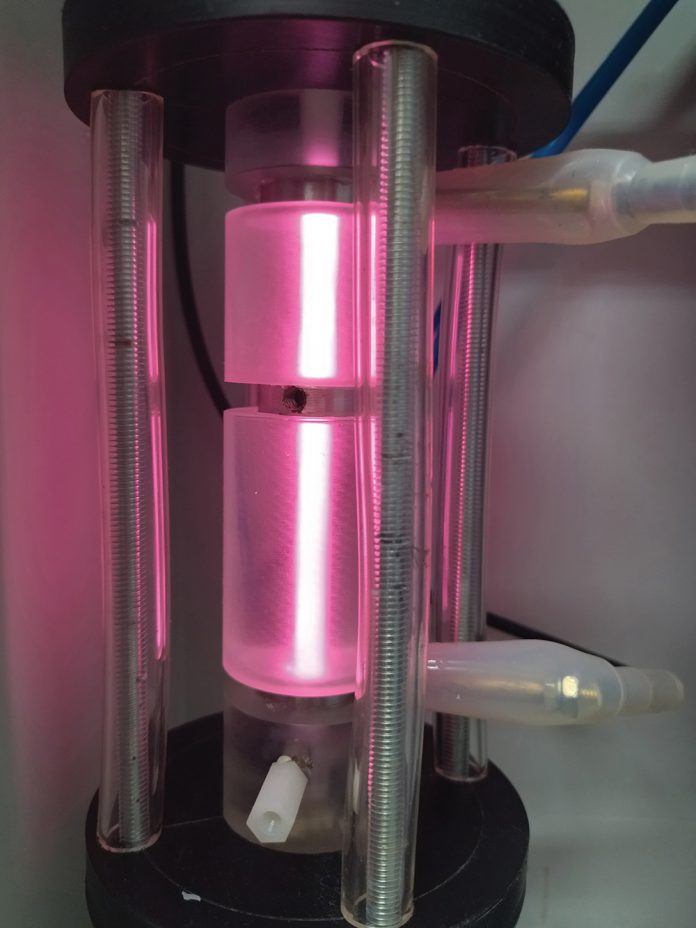“Lightning in a jar” and a chemical process with water and oxygen as the only byproducts are being developed as potential alternatives to chlorine in disinfecting drinking water.
Both innovations recently won a share of £4.5 million from Ofwat in its first Water Discovery Challenge.
Across the UK, over 15 million litres of water are cleaned daily, and treated to some of the strictest standards in the world.
The untreated water is filtered for harmful bugs, pesticides and chemicals using techniques which ultimately all involve chlorination – using small amounts (less than one milligram per litre) of a chlorine-based chemical to ensure the water is clean and safe to drink. However, this uses a lot of energy and requires transporting to treatment sites across the country.
Challenge winner Anamad uses “lightning in a jar” – chemically known as cold plasma– to safely disinfect water, with much lower operating costs than chlorine. Cold plasma is the electrical impulse – the jumping electrons – that spark when you ignite a gas hob. The spark is visible because it charges the air producing light and heat – this is plasma.
The technology – which looks like a strobe-lit coffee pot – requires no added chemicals or replacement parts and has low energy usage. The technique also helps to remove forever chemicals before water enters the wider environment.
Anamad was one of 10 teams awarded up to £450,000 each in the Water Discovery Challenge, to demonstrate how bold solutions can help solve the biggest challenges facing the water sector.
Helen Campbell, of Ofwat, said: “The products and ideas recognised in this cross-sector challenge will equip water companies to better face challenges of the future – including achieving sustainability goals and meeting net zero targets – all while providing the highest-quality water for consumers.”
Another winner is Freeox, the brainchild of scientists at Cardiff University and Origin Aqua. It’s another alternative to chlorination and uses a hydrogen-based chemical to clean the water, in a process that generates only water and oxygen as waste products, therefore offering a cleaner, more cost and energy-efficient solution to filtration.
Spokesman Andrew Cox said: “Unlike chlorine production, which is energy intensive, Freeox can be generated at point-of-use, reducing energy demand, while only creating water and oxygen byproducts- meaning there’s no chemical taste or smell.”
A third winner, ACQUIRE, from Mounce Hydrosmart, is using AI to speed the analysis of water quality incident reports – such as those made when water is heavily chlorinated. The software will also be able to identify interventions that have previously been effective in managing the problem reported – helping water companies keep drinking water safe, and ultimately accelerating how quickly customer incidents are resolved.
The competition is part of the Ofwat Innovation Fund, run by economic water regulator Ofwat, with Challenge Works, Arup and Isle Utilities and was a first for the water sector as it invited ideas from innovators across industries – unlike the Water Breakthrough Challenges.
Over the next six months, winners will also receive non-financial support to further the development of their solutions such as mentoring, along with a final showcase event that will allow them to pitch their projects to potential water company partners and/or investors.
Other winning projects include initiatives to generate green electricity from wastewater. One project from the University of St Andrews will create green electricity at wastewater sites through a process that also destroys greenhouse gases. Another initiative, from ICMEA-UK, will use pressurised hot-water technology to generate green energy from contaminated wastewater.
Winners for the Water Breakthrough Challenge 4 (open to those in the water sector only) will be announced in May this year.



